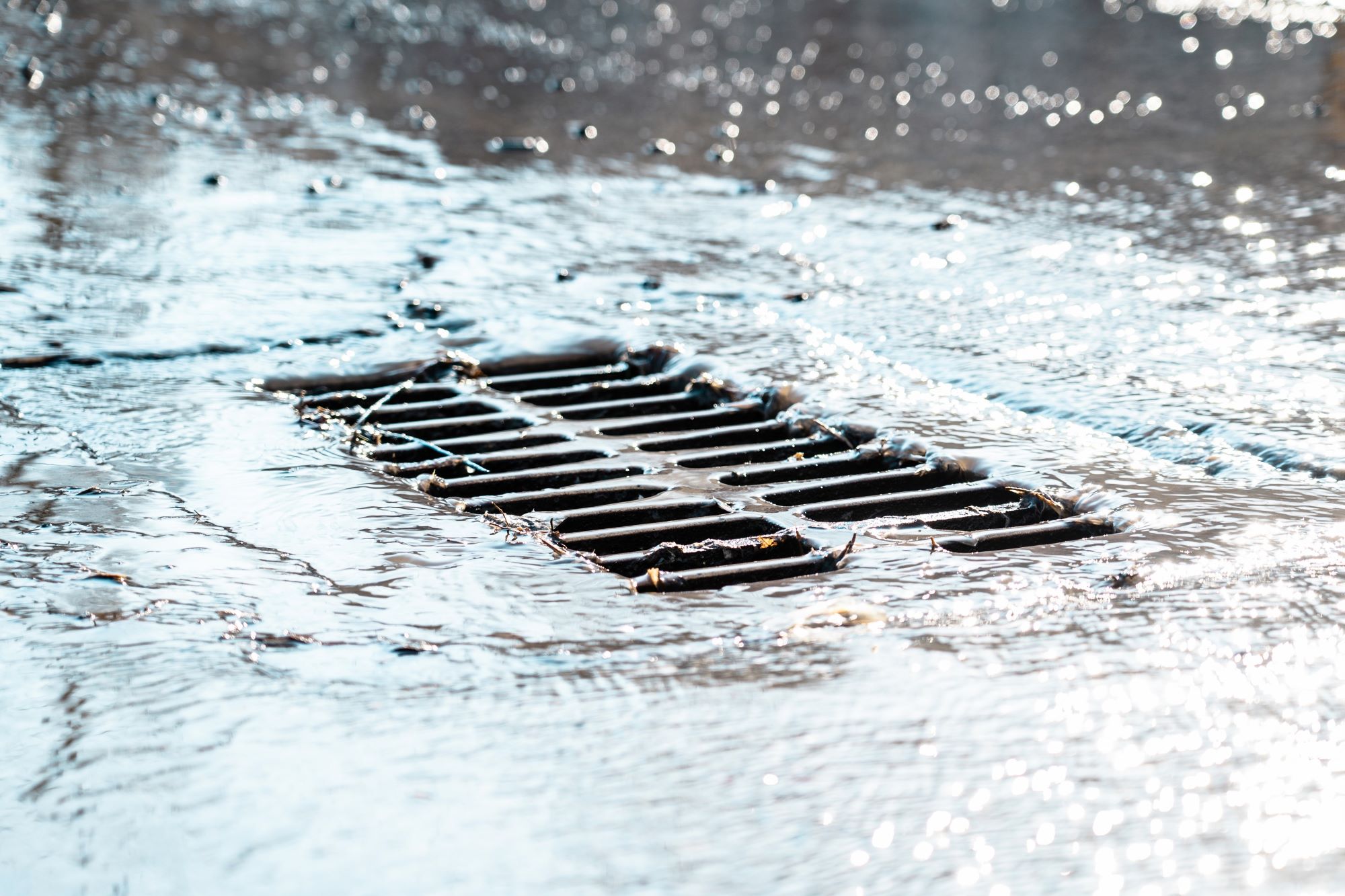
Have you ever found yourself in the middle of rinsing shampoo out of your hair, or watching another load of laundry go around and around, and suddenly stopped to wonder: where does all this water go, anyway?
In Metro Vancouver, the short answer is: Burrard Inlet, the Georgia Strait, or the Fraser River, all ending up in the Salish Sea, via one of the five very busy regional wastewater treatment plants (handling more than 400 billion litres per year).
Or...much less invisibly, if a sewer main bursts, that wastewater may end up on your sidewalk.
The corner of Main & Terminal in Vancouver, site of a second sewer main break in a 3-day period in June 2024.
Wastewater systems have been making headlines recently in Vancouver, where multiple sewer mains broke during a three-day period in June.
Coincidentally, Metro Vancouver is currently asking people to fill out a survey about how to manage the wastewater and stormwater systems for the region’s 3 million residents. This input will help shape its updated Liquid Waste Management Plan (LWMP), required under the BC Environmental Management Act.
Responsibility for the wastewater systems is divided between Metro Vancouver and its member governments. The large underground network of pipes and pump stations that whisks wastewater away to treatment plants is one of the primary services that local governments provide, and one of the most expensive.
Along with wastewater, local governments also manage ‘stormwater,’ which refers to rainwater and snowmelt that makes its way through our urban communities. Before urbanization covered the landscape with paving and other impermeable surfaces, much of this stormwater would sink into and then gradually flow through the ground to end up in streams and creeks. Instead, cities built networks of storm drains and pipes, which send stormwater much more rapidly to the same streams and creeks. Even the water from many roofs goes into these pipes through underground connections.
But stormwater in urban areas is not exactly pristine rainwater. As the water travels across roads and other surfaces, it also picks up all the particles on those surfaces, including pollutants. One example is 6PPD-quinone, a chemical that comes from tires as they wear down. It is notably lethal for coho salmon. Urban run-off of chemicals into storm drains has been killing baby fish for years, and there are new chemicals arriving on the market all the time.
So what can be done? West Coast Environmental Law has been involved in work for decades to support green infrastructure, which means relying on natural and bio-engineered approaches to manage stormwater. Some of these include: natural vegetation in riparian areas, rain gardens, bioswales, more trees everywhere, porous surfaces and other measures that allow stormwater to sink into the ground, and sometimes can even filter out harmful chemicals and other contaminants.
We need more green infrastructure! And we need to make sure that we are making the best decisions about where and how to use it.
Stormwater planning needs to support climate change and biodiversity strategies, so that fish and other species benefit too. This is even more important as we increase urban density to address housing affordability.
Take action
We encourage you to fill out this short survey and let Metro Vancouver know you want them to keep implementing improvements to wastewater management in the region.
Some suggestions include:
- Better reporting on how Integrated Stormwater Management Plans (a requirement under the current version of the Liquid Waste Management Plan) are protecting watershed health and being reflected in land-use decisions like re-zoning and permitting.
- Investigating and helping municipalities to implement green infrastructure solutions that can reliably intercept known pollutants like 6PPD-quinone.
- Monitoring the progress in reducing the presence of a priority list of pollutants in stormwater across the region.
- Encouraging land-use decision-making that aligns stormwater management, reduction of climate stressors and biodiversity benefits.
Don’t forget to fill out the survey before the deadline on July 4!